|
© Michelle Chan May has a special place in my heart, as it is both Asian American & Pacific Islander (AAPI) Heritage Month and Mental Health Awareness Month. With all that has been happening in the United States and around the world lately, I purposely chose May to publish my first children's book. During this special month, I wanted to gift others a book that touches on both of these topics. So please, join me in celebrating the month of May by reading this book with me and sharing it with others who may benefit from hearing its messages! The Backstory When I was just starting in my therapy career as a new graduate straight out of my masters program, I worked for a non-profit agency. The non-profit agency specialized in the care of children, teens, and their families. I found myself repeatedly talking to clients about the need to set boundaries. It was through these constant discussions that I realized how many children and teens were missing these important life lessons. One day, while I was spending quality time alone with my God-daughter, we had a talk during our car ride. She was in elementary school at the time, and I found myself trying to teach her about boundaries in a way that she could understand and wouldn't potentially scare her. So, I used the analogy of an invisible bubble. We talked about how there was a bubble around her. That the bubble’s size changed depending on where she was at, who she was with, and what she felt inside. She was definitely a smart cookie, because even as a young child, she was able to understand how the bubble was meant to protect her and let her know when she should ask for help! While that conversation happened quite a few years ago, and my God-daughter is now a teen, our conversation about the bubble stuck with me. So last year, when the memory of this conversation popped up in my mind (again), I again wished how more children could be taught this same message. I tried looking online for a book that talked about setting boundaries in this way for my young clients, but no matter how much I searched, I just couldn’t find it. And slowly, my wish of spreading this message led me to the idea of writing a children’s book myself. I wanted to create a story that was not only fun to read and enticing to look at, but also shared some important messages. Details, Details, Details "My Invisible Bubble" is a 8”x10” rhyming children’s book with illustrations that are beautifully detailed and colored. The main character in the book is an Asian American little girl, and she is surrounded by characters of different ethnicities. It was important for me that this book feel inclusive and representative of the wonderful world we live in. As many of us know, representation is so important, especially for young children. Throughout the book, the little girl wears many different outfits, so that young children know that there are many aspects and dimensions to each of them, and that it is more than okay to show that to the world! My Why This book was born out of a labor of love and a deep desire to make sure that as many children as possible hear the messages this story has to share. This story is a wonderful way for parents, caregivers, teachers, and/or therapists to start a conversation with children about identifying their feelings, learning to trust their own instincts, expressing their needs, and setting healthy boundaries with others. As many of us know, being able to set boundaries with others is an important way of being self-aware and for self-protection. The Hope This is a great book to be read again and again by caregivers to young children, to allow them an “in” to having ongoing conversations about boundaries. At the core of it all, it is to help children build a foundation in which they know their feelings are valid, and what they need to feel safe should be respected. May this also be a reminder to adults and caregivers that children’s needs should be taken into great consideration and care. "I have an invisible bubble around me; It protects me wherever I go. Even though you can't see it, It is always there, I know." -Michelle Chan, LMFT
0 Comments
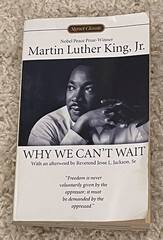 © Michelle Chan More than a year and a half ago, pre-COVID, I saw a pop-up selling used books in the middle of the mall. It was there that I came across this book by Dr. Martin Luther King Jr., “Why We Can’t Wait.” Like most, I had only learned briefly about who Dr. Martin Luther King, Jr. was. That he was a major leader in the Civil Rights Movement in the U.S., and that he used nonviolent protests and civil disobedience as the means to work towards obtaining equality and abolishing racial discrimination. Oh, and of course, his famous “I Have a Dream” speech. I realized that instead of reading about him, I can actually read and “hear” from him directly. This year, as a result of my personal goal to revive my childhood love of books, I finally made time to dive into this work by Dr. King, Jr. With all that has been happening or surfacing in the U.S. over the past year (e.g. COVID-19, murders of African/Black Americans by the police, white supremacists rioting at the Capitol, hate crimes and attacks on Asian Americans, etc.), Dr. King, Jr.’s words stung. Terribly. As a child, I was under the impression that racial discrimination was a thing of the past. Something that we as a society had learned and evolved from, and would never repeat again. It pained me greatly to read the words of Dr. King, Jr., from almost 6 decades ago, and have it still ring so true in 2021. In the book, Dr. King, Jr. mainly focused on what he did to end racial discrimination in Birmingham, Alabama. According to Dr. King, Jr., it was “the most segregated city in America” (36) at the time. He wrote about his decisions, the risks that went along with it, and the mindset he had in making these decisions. In history books, it was made to seem that taking the course of nonviolence was easy. But did you know? It was an extremely organized effort that entailed volunteers being trained to respond in peaceful and nonviolent manners, no matter what was being done to them! For some reason, it wasn’t until I read the words of Dr. King, Jr. that I realized how incredibly difficult it is to not defend oneself when being threatened or harmed. It was also during this time that the Black/African American community's perspective changed, and that “going to jail was no longer a disgrace but a badge of honor” (16). This reframe helped protestors let go of the internal barriers that had been in place before. Dr. King, Jr. wrote about how the road to racial equality needed to be multifaceted. It was not enough to just focus on increasing voter registration to elect officials who believed in racial equality, or to win cases in court, or to protest. Rather, ALL were needed to make a concerted effort. For even if cases were won in court, if we simply wait for those in power to put it into effect, we may end up waiting for eternity. For change to occur, we must each individually make a conscious effort to ensure that we are pushing towards a future where we all have equal treatment. What Dr. King, Jr. and his comrades in the Civil Rights Movement did, not only benefited Black/African Americans and all those who identify as people of color (POC), but American society and the world as a whole. This brief blog post does not do justice to the words and wisdom of Dr. King, Jr. So, please read his words for yourself! On that note, I will end with some of my top 5 inspirational quotes from Dr. King, Jr.’s book: “Nonviolence is a powerful and just weapon. It is a weapon unique in history, which cuts without wounding and ennobles the man who wields it. It is a sword that heals.” (12) “Injustice anywhere is a threat to justice everywhere. We are caught in an inescapable network of mutuality, tied in a single garment of destiny. Whatever affects one directly, affects all indirectly.” (65) "Freedom is never voluntarily given by the oppressor; it must be demanded by the oppressed.” (68) “We who engage in nonviolent direct action are not the creators of tension. We merely bring to the surface the hidden tension that is already alive. We bring it out in the open, where it can be seen and dealt with.” (73) “A social movement that only moves people is merely a revolt. A movement that changes both people and institutions is a revolution.” (107) © Michelle Chan
[Please note that I am not a medical doctor, and that this is not meant to be used as medical advice. Rather, it is only a recount of my personal experience.] One of the hot topics now is all the buzz around the COVID-19 vaccine, whether to get it, to not get it, to get it later, etc. As with everything, it is a decision one will have to make for themselves when they have the option to choose. As a therapist who not only works in private practice, I had the option to get the first dose of the vaccine a few weeks prior. For me, personally it was an easy choice to take the vaccine. I was willing to chance the possible side effects for the promise of its protection against COVID for myself, my loved ones, and all those I come into contact with, now and in the future. There are many questions floating about in regards to the side effects, leading many to feel anxious and concerned about the unknown or lesser known. So, while I am not a medical doctor and cannot tell you exactly what to expect, whether or not you should get the vaccine, or anything in general about the vaccine... What I can share is my first-hand experience. It may lead some to feel reassured and more knowledgeable, and others more anxious and with more questions. But either way, feel free to continue reading if you'd like to hear a little bit of my experience. Spoiler alert: what unfolded was quite uneventful. Saturday, January 9 Arrived for my 11:15AM appointment on the dot, and found out once I got there that there was a long single-file line. The line moved quite quickly, taking about 20-25 minutes before I got the vaccine. Afterwards, I was told to sit and wait for about 15 minutes before leaving, to ensure that I didn't experience any adverse side effects. During that time, I scanned a QR code to schedule my next dose. 3 hours after getting the vaccine, my arm started feeling noticeably more sore. The soreness that I felt was definitely more so than the soreness one feels after getting a flu shot. The soreness persisted throughout the rest of the day. That night, I didn't sleep well, because every movement I made led to me feeling the soreness in my arm. Sunday, January 10 I experienced a slight dull headache and tiredness throughout the day. But honestly, I'm not sure if it was because I had interrupted sleep the night before, maybe there was a change in weather, something that just happens to me from time to time, or due to the vaccine. I took a 1-hour nap in the afternoon, but didn't feel much of a difference afterwards. Only thing that was for certain, as a result of the vaccine, was that my arm continued to feel sore, making it difficult to lift my arm. However, by late afternoon/early evening, I felt less soreness on my entire arm, and it was more centralized to the upper part of my arm, near the injection site. That night when I went to sleep, my entire body felt really warm, which isn't usually the case for me. I woke up a few times to touch my forehead to see if I was having a fever, but my head remained cool to the touch. Monday, January 11 When I woke up in the morning, my headache from the day before was gone and my body returned to its normal temperature. I didn't feel any different than I usually do, other than my arm feeling tender to the touch at the injection site. I could also move my arm without experiencing any soreness. And... the rest is history! I was fortunate that I didn't experience any strong adverse side effects after my first dose and am hoping for the same after my second dose in about 2 weeks. Stay tuned! "Now is the time, if ever there was one, for us to care selflessly about one another." - Anthony Fauci, M.D. |
Michelle Chan, M.A., LMFT Archives
May 2021
Categories
All
|
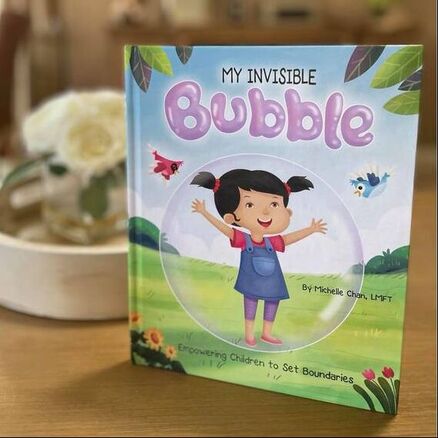
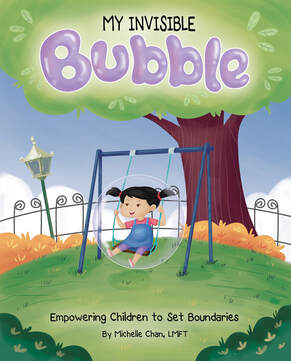
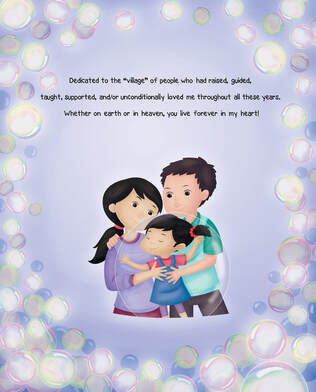
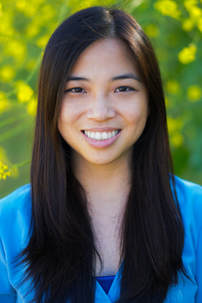
 RSS Feed
RSS Feed